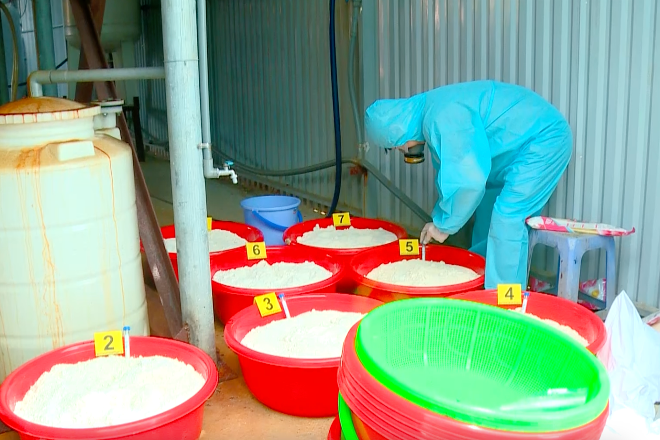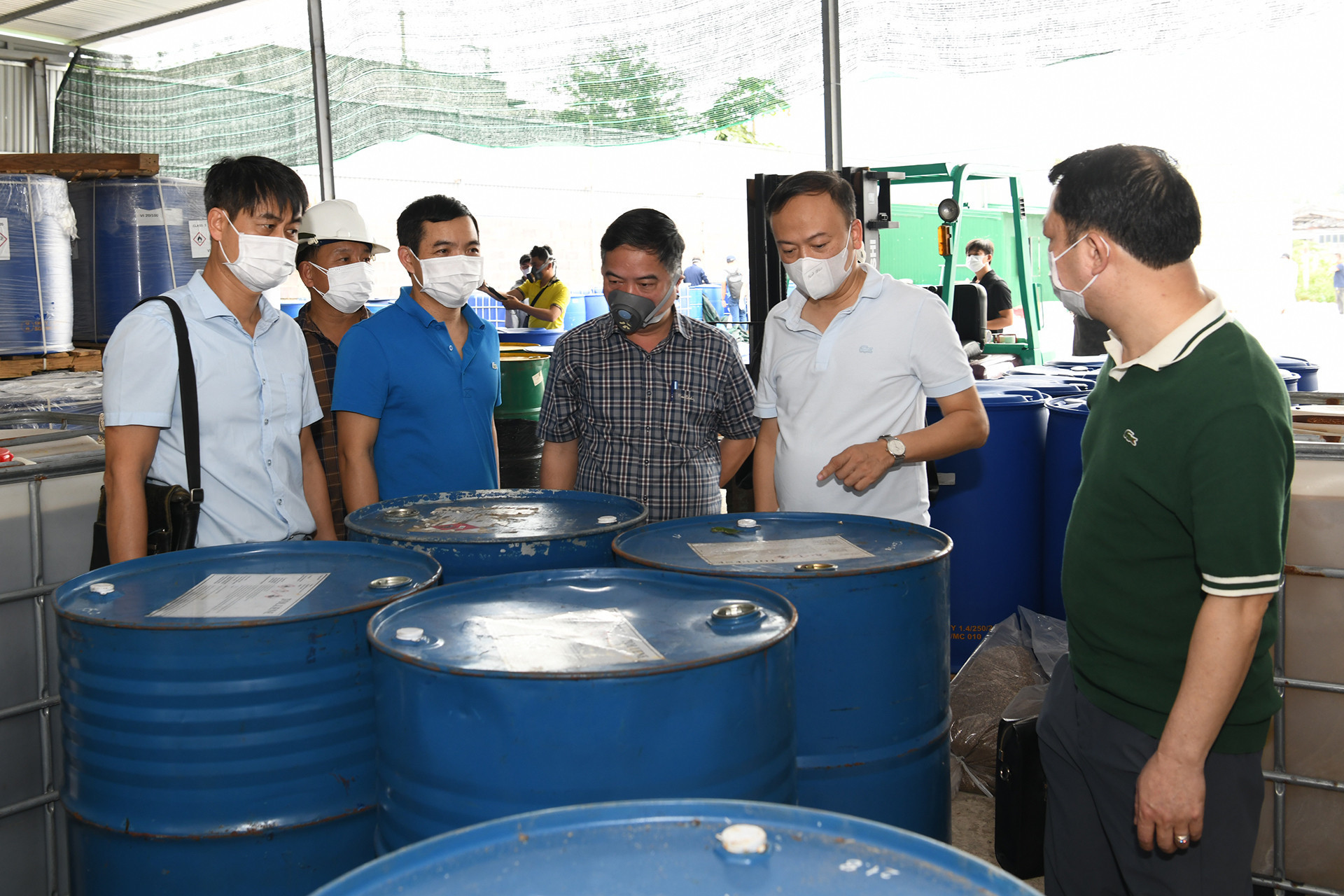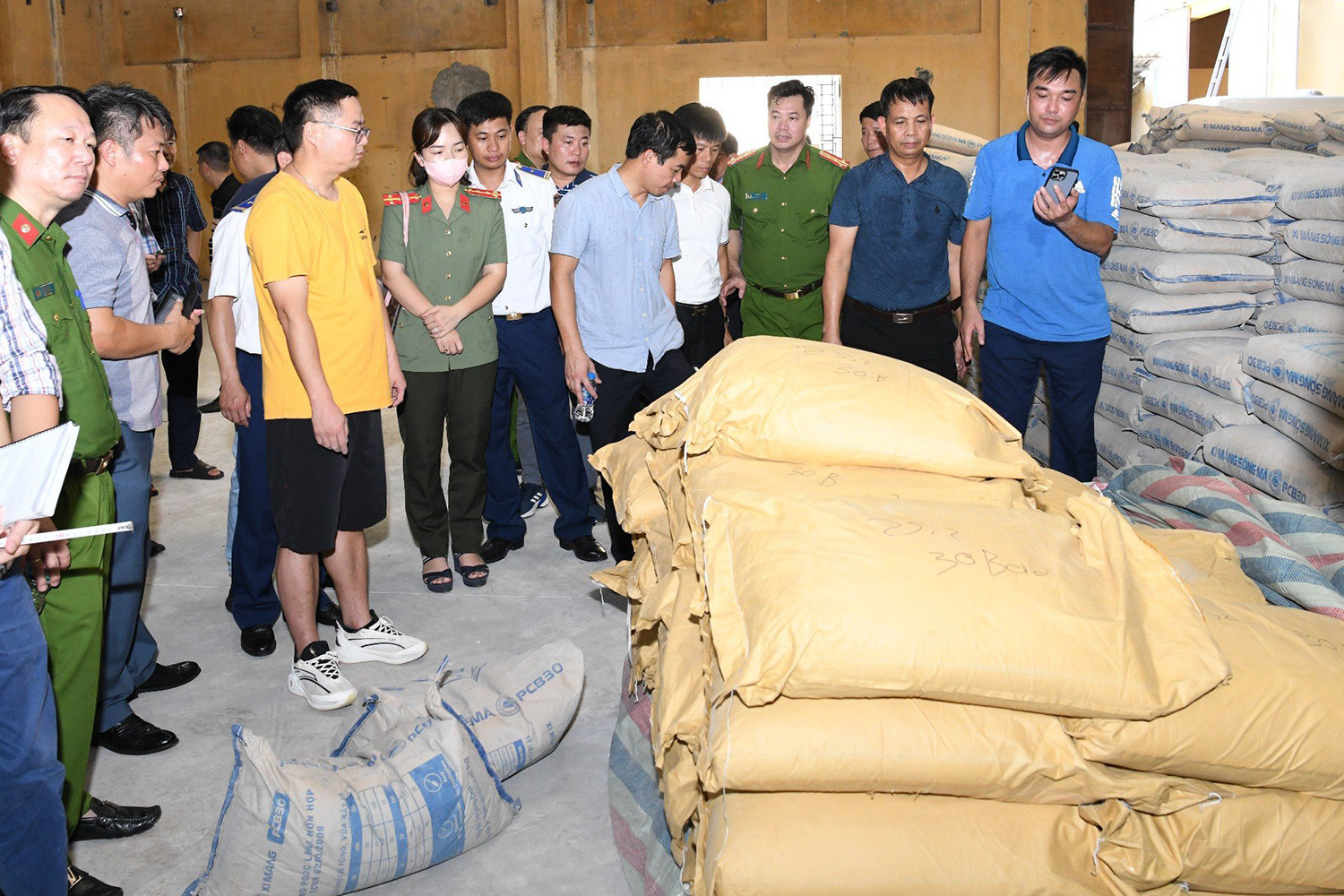
A string of major drug busts across Vietnam has revealed increasingly sophisticated tactics used by traffickers to conceal and transport massive quantities of narcotics - often amounting to several tons.
Drug syndicates continue to evolve their methods, ranging from transnational smuggling routes to in-country production. Among the most notable is the recent dismantling of a clandestine ketamine factory in Nha Trang, highlighting the boldness and technical complexity of modern drug operations.
In March 2025, the Ministry of Public Security, in coordination with other law enforcement agencies, raided a synthetic drug lab in Nha Trang City, seizing 1.4 tons of ketamine and nearly 80 tons of precursor chemicals.
The lab had been cleverly disguised as an industrial chemical facility, located within a secluded cemetery area - difficult to access and largely hidden from public view.
The operation was led by a group of foreign nationals using advanced technology to manufacture synthetic drugs on Vietnamese soil. The facility was fortified with a tight security system, including 24/7 surveillance cameras, electronic access controls, and guard dogs. When the raid took place, officers discovered an extensive array of machines used for processing, refining, and packaging the drugs - demonstrating an unprecedented level of professionalism.
Eleven suspects were arrested at the scene, many of them foreign nationals. According to C04 (the Drug Crime Investigation Department), this is the largest drug production case ever dismantled in Vietnam.
Beyond rural production hubs, traffickers have developed increasingly cunning methods to export narcotics overseas. One such case occurred in Hai Phong in September 2023, when authorities intercepted over a ton of ketamine hidden in cement sacks.
Operating under the guise of a building materials export company, the criminal group rented a warehouse in Hong Bang District and stockpiled 100 tons of cement to create a smokescreen. The drugs were concealed inside unmarked bags and interspersed among the cement sacks in an attempt to fool customs inspections.
However, C04 successfully dismantled the operation, seizing 30 unmarked bags - each weighing 25 kilograms - containing a total of 750 kilograms of ketamine. A further 550 kilograms were discovered in an expanded investigation.
A similar tactic was used in Ho Chi Minh City in April 2019, when suspects attempted to smuggle 1.1 tons of methamphetamine concealed inside portable speaker systems. The drugs were packaged into small bricks and stashed inside the speakers before being intercepted during transport.
These cases reflect the growing sophistication of drug traffickers in both production and distribution, making the fight against narcotics increasingly challenging.
One of Vietnam’s most notorious drug cases remains Operation 006N, launched by Quang Ninh provincial police in April 2012. The case involved the smuggling of 12 tons of heroin, making it one of the largest busts in the country's history.
The syndicate was highly organized, with dozens of operatives tasked with transporting heroin from Laos into Vietnam and onward to China. Authorities uncovered the ring through close surveillance and analysis of the group’s logistics network.
Despite the traffickers’ elaborate cover-ups, the tightly coordinated efforts of law enforcement eventually unraveled the network. A total of 147 suspects were indicted and prosecuted, including 30 who received death sentences for trafficking "white death" on an industrial scale.
Operation 006N stands as a landmark achievement in Vietnam’s war on drugs - and a stark warning to those who continue to flirt with the deadly trade.




Inside the mega drug lab built on 1,000 square meters in Nha Trang
Anh Tam